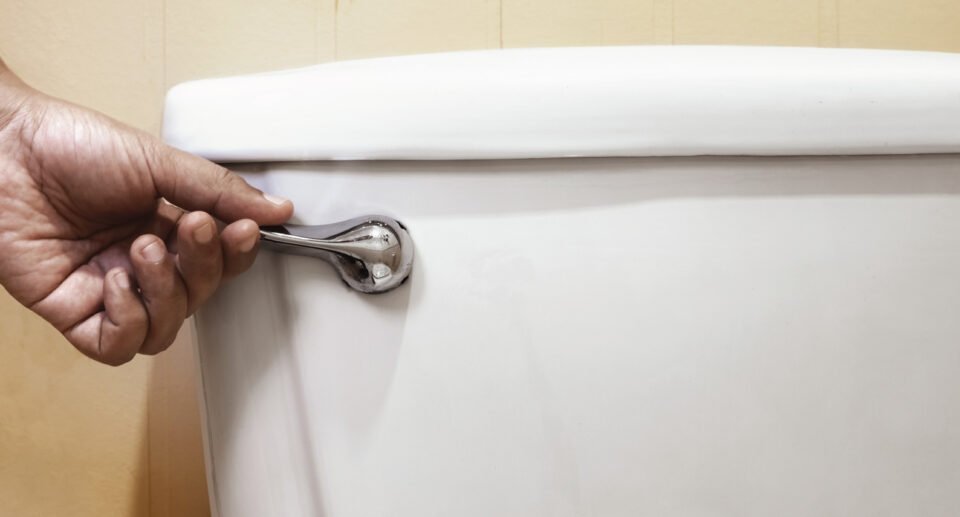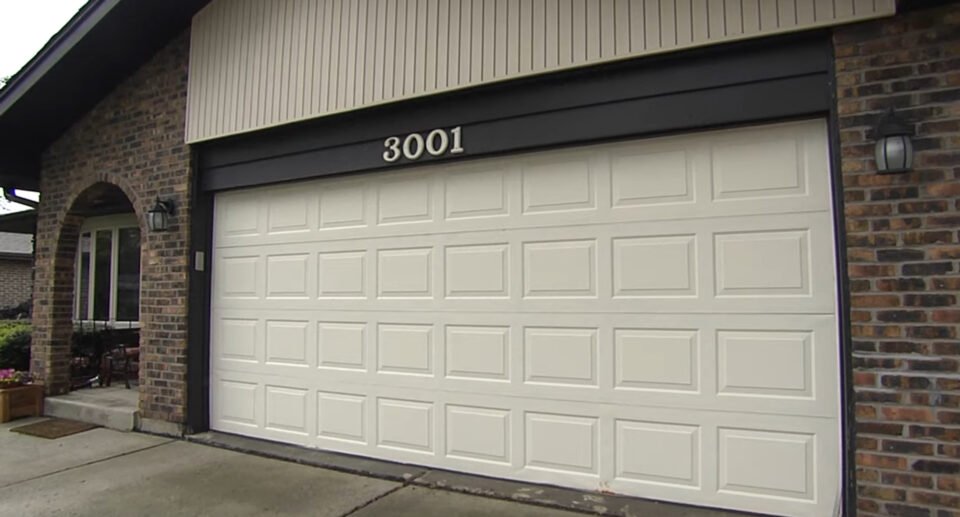Why Won’t My Toilet Flush? Your Ultimate Expert Guide With Videos

Table of Contents
ToggleWhen a toilet won’t flush, it can be a frustrating and embarrassing situation. There are several reasons why a toilet may not be flushing properly, and identifying the cause is the first step in fixing the problem.
Some common causes of a toilet that won’t flush include a clogged drain, a malfunctioning flapper, or a low water level in the tank.
If the toilet is clogged, it may be due to an obstruction in the drain pipe. This can be caused by flushing inappropriate items down the toilet, such as paper towels, feminine hygiene products, or excessive amounts of toilet paper.
In some cases, a plunger can be used to dislodge the obstruction, but if the clog is severe, it may require the use of a plumbing snake or the help of a professional plumber.
Another common cause of a toilet that won’t flush is a malfunctioning flapper. The flapper is a rubber valve that controls the flow of water from the tank into the bowl. If the flapper is damaged or worn, it may not seal properly, causing water to leak out of the tank and preventing the toilet from flushing. In this case, replacing the flapper is usually a simple and inexpensive fix.
Common Causes of a Non-Flushing Toilet
A non-flushing toilet is a common household problem that can be caused by several issues. Here are some of the most common causes of a non-flushing toilet:
Clog Issues
One of the most common causes of a non-flushing toilet is a clog. A clog can be caused by a variety of things, such as too much toilet paper, foreign objects, or other obstructions.
To unclog a toilet, one can use a plunger or a plumbing snake. If the clog is severe, it may be necessary to call a professional plumber.
Flapper Valve Malfunctions
Another common cause of a non-flushing toilet is a malfunctioning flapper valve. The flapper valve is responsible for regulating the flow of water from the tank to the bowl.
If the flapper valve is not functioning properly, it can prevent the toilet from flushing. This issue can be fixed by adjusting or replacing the flapper valve or the flapper seal.
Low Water Level in the Tank
A low water level in the tank can also cause a non-flushing toilet. The water in the tank should be at least one inch below the top of the overflow tube.
If the water level is too low, the toilet may not flush properly. This issue can be fixed by adjusting the water level in the tank.
Issues with the Flush Valve Assembly
The flush valve assembly is responsible for releasing water from the tank into the bowl when the toilet is flushed. If the flush valve assembly is not functioning properly, it can prevent the toilet from flushing.
This issue can be fixed by adjusting or replacing the flush valve assembly.
Fill Valve and Float Problems
The fill valve and float are responsible for regulating the water level in the tank. If the fill valve or float is not functioning properly, it can cause the water level in the tank to be too low or too high, which can prevent the toilet from flushing.
This issue can be fixed by adjusting or replacing the fill valve or float inside the tank.
Blocked Vents
Blocked vents can also cause a non-flushing toilet. The vent pipe is responsible for allowing air to flow into the plumbing system, which helps to regulate the flow of water.
If the vent pipe is blocked, it can cause the water to drain slowly or not at all. This issue can be fixed by clearing the vent pipe or calling a professional plumber.
Troubleshooting Steps
When a toilet won’t flush, it can be a frustrating experience. However, before calling a plumber, there are several steps that can be taken to troubleshoot and repair the problem.
The following subsections will guide you through the process of inspecting and repairing the most common causes of a toilet that won’t flush.
Inspecting the Flapper
The flapper is a rubber valve located at the bottom of the toilet tank. It is responsible for releasing water from the tank into the bowl when the toilet is flushed.
If the flapper is worn or damaged, it can prevent the toilet from flushing properly.
To inspect the flapper, remove the tank lid and flush the toilet. Watch the flapper to ensure that it lifts completely and stays open until the tank is empty.
If the flapper does not lift or falls back down too soon, it may need to be replaced.
Adjusting the Water Level
The water level in the toilet tank can also affect the flushing ability of the toilet. If the water level is too low, there may not be enough water to create a strong flush.
To adjust the water level, locate the fill valve in the toilet tank. This is the mechanism that refills the tank after each flush.
Adjust the float on the fill valve to raise or lower the water level in the tank. The water level should be about an inch below the top of the overflow tube.
Checking for Clogs
Clogs are another common cause of a toilet that won’t flush. A clog can be caused by a variety of things, including too much toilet paper or foreign objects that have been flushed down the toilet.
To check for a clog, use a plunger to try and dislodge the obstruction. If the plunger does not work, a drain snake may be necessary to remove the clog.
Evaluating the Flush Handle and Chain
The flush handle and chain are responsible for lifting the flapper and releasing water from the tank. If the handle or chain is broken or damaged, it can prevent the toilet from flushing properly.
Check the handle and chain to ensure that they are functioning properly. If they are not, replace them as needed.
Assessing the Fill Valve and Float
The fill valve and float are responsible for refilling the toilet tank after each flush. If the fill valve or float is not functioning properly, it can prevent the toilet from flushing properly.
Check the fill valve and float to ensure that they are functioning properly. If they are not, replace them as needed.
When to Call a Professional
While many toilet flushing issues can be resolved with simple troubleshooting, there are times when calling a professional plumber is necessary. Here are some scenarios where it is best to leave the repairs to a licensed plumber:
Persistent Clogging Issues
If your toilet is frequently clogged despite your best efforts to clear it, there may be a more serious blockage in the drain line or sewer.
A professional plumber can use specialized equipment to locate and remove the blockage, preventing further damage to your plumbing system.
Complex Mechanism Failures
If you have tried adjusting or replacing the flapper valve, flush valve assembly, and fill valve assembly but your toilet still won’t flush properly, there may be a more complex issue with the internal mechanisms.
A professional plumber can diagnose and repair these issues, restoring your toilet to proper working order.
Plumbing System Concerns
If your toilet flushing issue is accompanied by other plumbing problems, such as low water pressure or leaks, it may be a sign of a larger plumbing system issue.
A licensed plumber can inspect your plumbing system and identify any underlying problems that need to be addressed.
Ventilation Problems
If your toilet is not flushing properly and you hear gurgling sounds coming from your drains, it may be a sign of ventilation problems.
This can cause wastewater to back up into your home, creating health hazards and unpleasant odors. A professional plumber can inspect your vent pipe and roof vents to ensure proper ventilation and prevent future problems.
Preventative Maintenance and Care
Regular cleaning and maintenance of a toilet are essential for maintaining optimal performance and preventing issues like a toilet that won’t flush. Here are some tips for preventative maintenance and care:
Regular Cleaning and Inspection
Routine cleaning of the bowl, flush ports, and rim jets prevent mineral buildup that may hinder proper flushing, ensuring both hygiene and flushing power.
Regular inspection of inlet holes, rim jets, flapper valve, fill valve, and flush valve for any signs of wear and tear or obstruction can help detect and fix issues before they escalate.
Proactive Replacement of Components
Replacing old or worn out components like the flapper valve, fill valve, and flush valve can help maintain proper flushing and prevent leaks, which can cause water wastage and damage to floors and walls.
Regular replacement of these components can also help prevent the need for costly repairs.
Avoiding Common Misuses
Avoid flushing items like plastic, wipes, and feminine hygiene products down the toilet, as they can cause clogs and damage to the plumbing system.
Also, avoid using excessive amounts of toilet paper, as it can cause blockages in the pipes and prevent proper flushing.
DIY Repair Tips
If your toilet won’t flush, don’t panic. There are several DIY repair tips you can try before calling a plumber. Here are some common issues and their remedies:
Replacing the Flapper
If you notice that your toilet is running continuously, it’s likely that the flapper is worn out or damaged.
To replace the flapper, turn off the water supply to the toilet and flush the toilet to empty the tank. Remove the old flapper and replace it with a new one, making sure that it is properly aligned and seated.
Adjusting the Chain Length
If the lift chain that connects the flapper to the metal arm is too long or too short, it can prevent the flapper from sealing properly, causing the toilet to run continuously or not flush at all.
To adjust the chain length, simply use a wrench or pliers to loosen the nut that connects the chain to the metal arm, and adjust the length of the chain as needed.
Clearing Minor Clogs
If the toilet is not flushing properly, there may be a clog in the trap or drain. A plunger is usually enough to clear minor clogs.
Make sure there is enough water in the bowl to cover the plunger, and use a fast, forceful motion to create suction and pressure to clear the clog.
Fixing the Fill Valve
If the toilet won’t flush or is running continuously, the fill valve may be the culprit.
To fix the fill valve, turn off the water supply to the toilet and flush the toilet to empty the tank. Remove the old fill valve and replace it with a new one, making sure that it is properly aligned and seated.
Dealing with a Slow-Flushing Toilet
If your toilet is flushing slowly, it may be due to clogged inlet holes under the rim of the bowl.
To clean the inlet holes, use a wire hanger or an extra-long auger to clear any debris or mineral buildup. You can also pour hot water into the bowl to help dissolve any blockages.
Remember, before attempting any DIY repairs, make sure you have the proper tools and knowledge. If the problem persists or you are unsure of what to do, it’s always best to call a professional plumber.
Upgrading Your Toilet System
If you’re tired of dealing with a toilet that won’t flush properly, it may be time to consider upgrading your toilet system. There are several options available that can improve flushing power, reduce water usage, and provide a more efficient and effective flushing experience.
High-Efficiency Toilets
One option for upgrading your toilet system is to install a high-efficiency toilet. These toilets use less water per flush than traditional toilets. This can help reduce your water usage and lower your water bill.
They also often come with advanced flushing mechanisms. These can provide a more powerful and effective flush.
High-efficiency toilets may cost more upfront than traditional toilets. However, the long-term savings on your water bill can make them a worthwhile investment. Plus, many models are designed to be easy to install, making them a great DIY option for homeowners.
Dual-Flush Options
Another option for upgrading your toilet system is to install a dual-flush toilet. These toilets have two flush options: a low-volume flush for liquid waste and a high-volume flush for solid waste. This can help reduce water usage even further, as you can select the appropriate flush option for each use.
Like high-efficiency toilets, dual-flush options may cost more upfront than traditional toilets. However, the long-term water savings can make them a cost-effective choice in the long run.
Advanced Flushing Mechanisms
Finally, you may also want to consider upgrading your toilet system with an advanced flushing mechanism. These mechanisms can help improve flushing power and ensure that your toilet flushes properly every time.
Options include upgrading your flush valve, replacing your flapper, or adjusting the chain that connects the flush handle to the flapper. While these upgrades may not provide the same water savings as high-efficiency or dual-flush options, they can help ensure that your toilet flushes properly and reduce the risk of clogs and other issues.
Conclusion
In conclusion, a toilet that won’t flush can be a frustrating and embarrassing problem. However, there are several possible causes, such as a disconnected lever, a faulty flapper, a clogged drain, or a low water level, that can be easily diagnosed and fixed with step-by-step instructions and helpful tips.
If the water level in the toilet tank is low, it may not flush properly. The water level should be about an inch from the top of the overflow tube. If it isn’t, look for the float shaped like a round ball connected to the fill valve. If the float is not working properly, it may need to be replaced.
Another possibility is that the water filling in the tank did not reach its marked level. The water pump fills the tank with toilet water and the float goes up to the designated point. The float is supposed to determine the needed amount of water for a flush, so if the pump stops filling the tank with water, it may need to be replaced.
If the toilet still won’t flush properly after trying these fixes, it may be time to call a professional plumber for assistance. With a little confidence and knowledge, most toilet flushing problems can be easily resolved.
Frequently Asked Questions
The toilet flush valve may malfunction due to various reasons such as a clogged drain, low water levels, or a disconnected lever. In some cases, the flapper may be faulty, causing the toilet to run continuously. The chain that connects the flapper to the flush handle may also be too long or too short, causing the toilet to malfunction.
A toilet that fills with water but doesn’t flush can be caused by a clogged drain, low water levels, or a faulty flapper. To resolve this issue, ensure that the tank’s water level is at least an inch below the overflow tube. If the water level is low, adjust the float to increase the water level. If the flapper is faulty, replace it.
When the toilet won’t flush and the water levels rise, the issue could be a clogged drain. To resolve this issue, use a plunger to try and clear the blockage. If the plunger doesn’t work, use a toilet auger to clear the drain. If the issue persists, it could be a sign of a more significant problem, and you may need to call a professional plumber.
Slow and incomplete flushes are usually caused by a clogged drain or low water levels. To resolve this issue, ensure that the water level in the tank is at least an inch below the overflow tube. If the water level is low, adjust the float to increase the water level. If the drain is clogged, use a plunger to try and clear the blockage.
If your toilet won’t flush despite not being clogged, the issue could be a faulty flapper. Check the flapper to ensure it is not damaged or worn out. If the flapper is faulty, replace it.
If your push-button toilet isn’t flushing properly, the issue could be a clogged drain or a faulty flush valve.
To resolve this issue, use a plunger to try and clear the blockage. If the plunger doesn’t work, use a toilet auger to clear the drain. If the flush valve is faulty, replace it.

Hello, I’m Keith Jones. I’m the author and head of content here of door and window guide. I’ve been in the window and door industry for over 10 years in the UK and North America. I’ve had quite a few roles during my career mainly in Worldwide sales. I’m now semi retired so I thought I’d put my knowledge to good use educating people about all they might need to know about door and window related topics.






